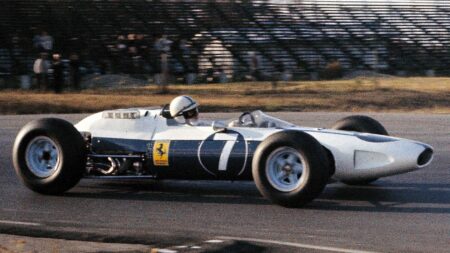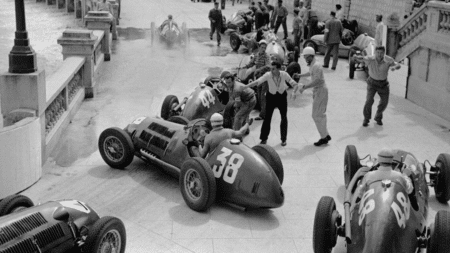When the British Motor Company staff launched the Morris Mini-Minor in 1959, no-one dared imagine the success its work would inspire across so many spheres and for so many decades. It is one of the few cars that generates excitement amongst the general public and ‘car people’ alike – a feat not easily achieved.

As an original Cooper S passes through town, Motor Sport readers turn in their tracks to catch a glimpse of the car with three Monte Carlo wins to its name. For the non-petrolheads among us, its motor sport pedigree is lost in a sea of cultural and design significance. Others simply love its novelty and toy-like size. The word is used too often, but the Mini truly is iconic.

A quintessentially British car, Mini variants were manufactured by BMC, British Leyland and the Rover Group, among others. The cars were produced in England from the ‘50s to the turn of the century and remain a great source of national pride. Greeks too should stand tall at the sight of the bite-size machine for it was compatriot Sir Alec Issigonis who designed the car.
A British-educated automotive engineer, Issigonis was also a keen racing driver. Throughout the ‘30s he was often found competing successfully in an Ulster Austin Seven. His modifications to the car’s front axle caught the marque’s attention and landed him a position with the Longbridge-based company. Issigonis also spent time at Morris Motors and Alvis Cars before being recruited by BMC (the company formed from the merger of Austin and Morris) in ’55. It was here where his most famous work began.

Despite a successful launch, BMC had no plans for a sporting version of Issigonis’s Mini until John Cooper persuaded them otherwise. With a tiny wheelbase (2.05m) and a front-engined, front-wheel-drive set-up, the Mini was not necessarily a natural winner. Yet Cooper, who was used to doing things differently (a Cooper T43 was the first world championship racer to take a Grand Prix victory with the engine positioned behind the driver), immediately saw the car’s potential. With input from Issigonis, who initially opposed Cooper’s plan, BMC launched the Mini Cooper in ’61 and the Cooper S in ’63.
Both variants of Cooper featured shortened gear-ratios, front disc brakes and a series of engine upgrades. Under Cooper’s watch, the Mini’s in-line four was also offered in a host of displacements, specifically targeted for various racing classes and capacity restrictions. The 1275cc Cooper S produced 75bhp at 5800rpm and topped out at just under 100mph. Those figures may seem somewhat sterile today but matched to the light and nimble chassis, they certainly produced the goods in period.

In addition to the three official Monte Carlo wins in ’64, ’65 and ’67, Timo Mäkinen and his BMC Mini were arguably the rightful winners of the ’66 staging of the rally. Disqualified for using non-dipping headlights, the top four finishers were relegated from the results sheet leaving Pauli Toivonen in his Citröen DS21 to take the spoils. Minis were successful on-circuit too, winning British Saloon Car titles and European Touring Car Championships throughout the ‘60s.
Unsurprisingly for a car with so much popular appeal, success and good will, there remains a healthy community of classic mini racers to date. The car featured here, available at Silverstone Auctions on July 23 later this month (estimate: £42,000-48,000), is one such example. Supplied with HTP papers, this red gem is eligible to compete in the Masters Pre-66 Touring Cars, U2TC, HSCC Touring Cars, the NKHGT Dutch Championship and the French Maxi Mille, to name a few. Built by Dale Racing with an engine, shocks and driveshafts supplied by Mini specialist Swiftune, it is capable of success given the right wheelman.
This Cooper S is finished in the perfect specification with rose petal alloys, red paintwork, white roundels and chrome bright work to finish things off. The custom roll cage matches the paintwork and a new Corbeau bucket seat rests behind the open steering column and Sparco three-spoke wheel. All that is left to decide is which number to put on the doors?
Click here to visit this car’s classified page










